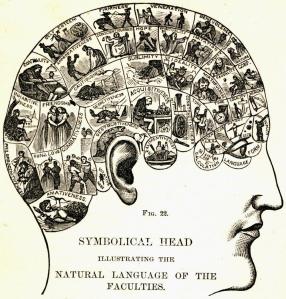Austin Kirkbride, M.A., is a Project Manager, certified in Scrum and waterfall project management approaches, and an Organizational Change Management specialist with 20 years of domestic and international experience working in the people side of technology and change. This is the first in a series of posts on how Scrum can enhance learning organizations. written in collaboration with the colleagues on her team.
 software development world, the scrum methodology has translated well to other industries as it emphasizes functional deliverables, the flexibility to change and adapt along with emerging business realities, and provides a high level of communication and collaboration across the team.
software development world, the scrum methodology has translated well to other industries as it emphasizes functional deliverables, the flexibility to change and adapt along with emerging business realities, and provides a high level of communication and collaboration across the team.I beg to differ.
One of the more elegant aspects of Scrum is that it is a framework, not a dogma. I’ll admit that ADDIE reeks of waterfall project management and implies that there are hand-offs and linear thinking required to apply the methodology. But with a little open-minded application, I see no reason why ADDIE can’t live in the Scrum world. Here’s how:
Assess: Learning can’t happen unless we know what the scope of the training needs to be. The Assessment is critical to understanding things like audience, content needs, identifying subject matter experts, and looking at how the training fits into the larger needs of the organization. Assessments can be treated as a Sprint Zero, occurring over a couple of weeks or actually broken down into Sprints if the assessment requires a longer chunk of time. The Sprint Zero is the opportunity for the Product Owner, Scrum Master, and team to identify business requirements and value, needs, scope, etc., so why wouldn’t it be malleable enough to be a time of learning assessment?
Design: Once the scope and assessment of the learning needs is identified, the approach, or design, will begin to evolve. Depending upon the scope of the project, the design can be treated as Sprint Planning (for smaller projects with a minimum of complexity) or the design process can be sprinted, with client design reviews (Sprint Reviews) at the end of the sprints to gain sign-off and buy-in from the client (for larger, more complex projects).
Development: Much like software development, learning development can be planned for, sprinted, and reviewed, whether eLearning or Instructor-led. Developing training – eLearning or ILT – would align most closely with its parentage in software development, allowing the instructional designers/developers to collect content and iteratively present it to the client until delivery.
Implementation: This is where applying Scrum needs to be an exercise in Scrum framework flexibility. If implementing training means putting the eLearning on the LMS, there is probably no need to sprint the activity – likely it would be a task within the final sprint. But if implementation requires the team to deliver the learning in a classroom, webcast or interactive environment, it would likely make sense to sprint these activities, complete with stories and tasks. As long as the team is producing a product, it continues to Sprint and deliver to the client.
Evaluation: Again, the process of evaluation may be part of a sprint, or might be sprinted separately, depending upon the scope of the evaluation. Most Level I or II evaluation might likely be tasks within a sprint if, for instance, it is a compiling of survey results at the end of a learning event. Larger evaluation approaches, such as following up with large-scale, long-term metrics, may require their own sprint, or possibly even their own project.

 In the first part of this series, we talked about the role of the individual in learning. It’s hard to make someone learn if they’re not willing. But what if they are willing but are not encouraged or worse are discouraged by the person who judges their performance: their manager? What is the manager’ attitude toward the new knowledge and skills learned?
In the first part of this series, we talked about the role of the individual in learning. It’s hard to make someone learn if they’re not willing. But what if they are willing but are not encouraged or worse are discouraged by the person who judges their performance: their manager? What is the manager’ attitude toward the new knowledge and skills learned? Challenge 1: How does this relate to me? Can you recall a time when you were totally uninterested and unmotivated to learn? Maybe in grade school during history class? For me it was college math. I simply was not interested. Why? I did not ever think calculus was something I would use in “real life.”We know from adult learning principles that people learn best when they can see the relevance the content has to their day-to-day jobs, and to their lives. So, one would think the answer is simple: show people how the content is relevant to them, and they will be open to learning it. As important as this concept is, it’s something designers forget to do as they get all caught up in designing the learning.
Challenge 1: How does this relate to me? Can you recall a time when you were totally uninterested and unmotivated to learn? Maybe in grade school during history class? For me it was college math. I simply was not interested. Why? I did not ever think calculus was something I would use in “real life.”We know from adult learning principles that people learn best when they can see the relevance the content has to their day-to-day jobs, and to their lives. So, one would think the answer is simple: show people how the content is relevant to them, and they will be open to learning it. As important as this concept is, it’s something designers forget to do as they get all caught up in designing the learning. 




 o you want your learners to collaborate? To demonstrate leadership skills? To drive towards a goal? To evaluate and analyze situations before committing to a decision? To value the perspectives of others? To improve performance?
o you want your learners to collaborate? To demonstrate leadership skills? To drive towards a goal? To evaluate and analyze situations before committing to a decision? To value the perspectives of others? To improve performance? nesses about using games to improve performance way back in 1985. Back then, I was working mostly with mid-level and senior mangers, so talking about games required hushed tones and euphemisms. After all, busy important managers couldn’t spend time playing games. They had big, big decisions to make. And so what if the game was designed to help them be even more effective in making those big, big decisions? This was serious business. They weren’t games; they were “experiences,” or “competitions,” or “challenges.” Or maybe you just didn’t talk about it at all.
nesses about using games to improve performance way back in 1985. Back then, I was working mostly with mid-level and senior mangers, so talking about games required hushed tones and euphemisms. After all, busy important managers couldn’t spend time playing games. They had big, big decisions to make. And so what if the game was designed to help them be even more effective in making those big, big decisions? This was serious business. They weren’t games; they were “experiences,” or “competitions,” or “challenges.” Or maybe you just didn’t talk about it at all.

